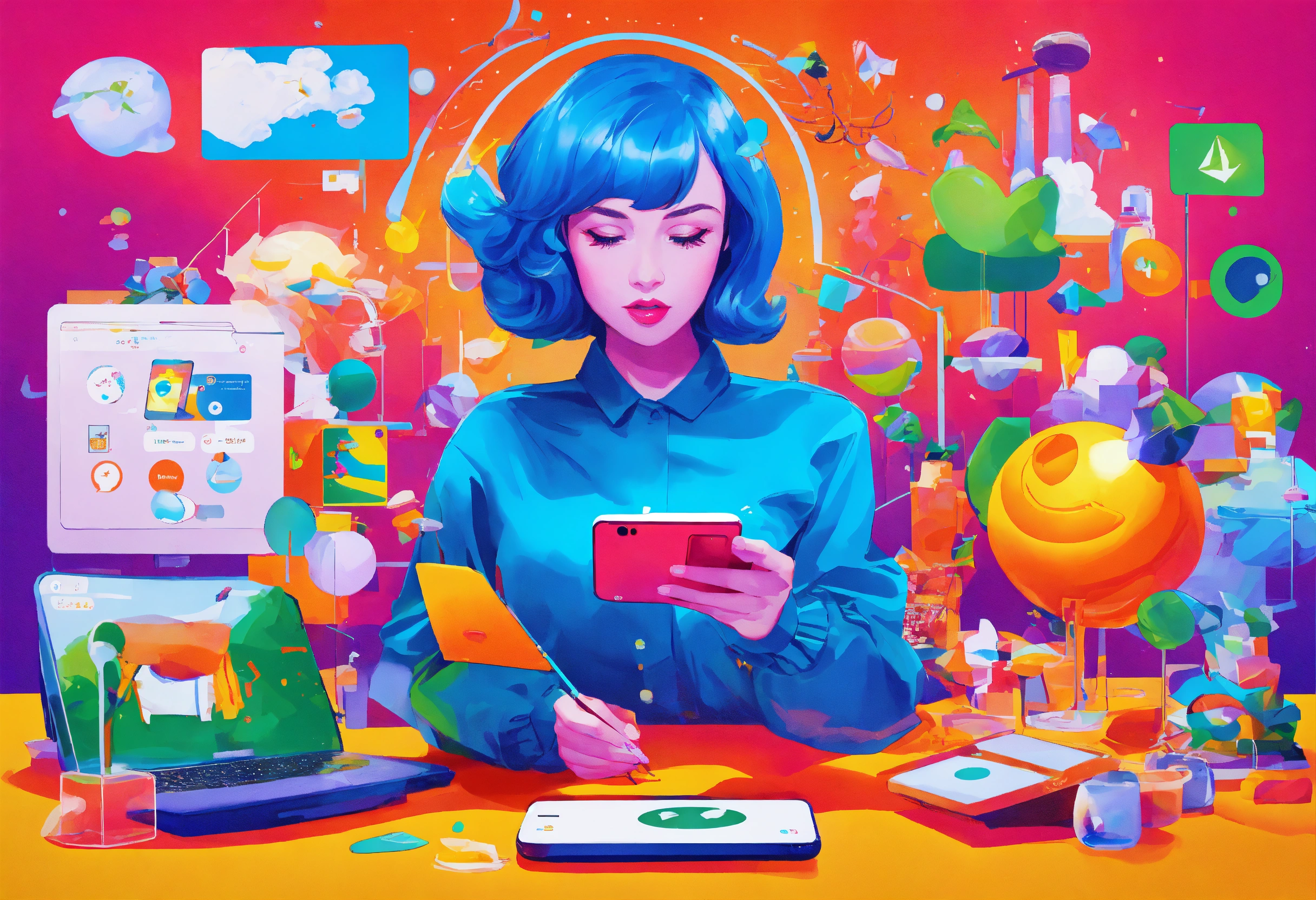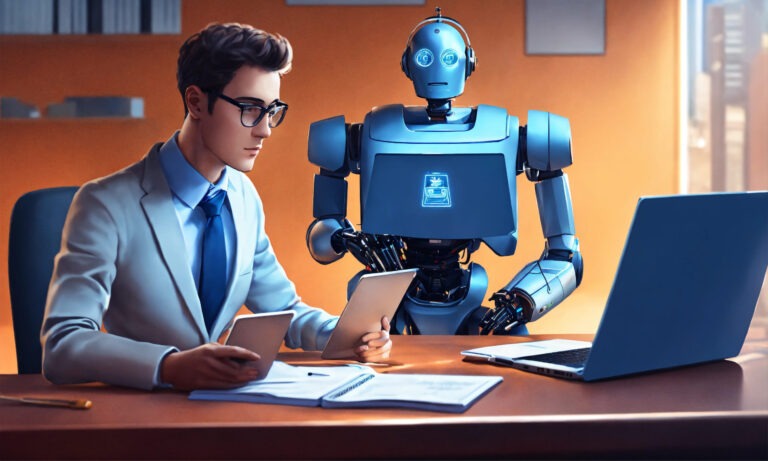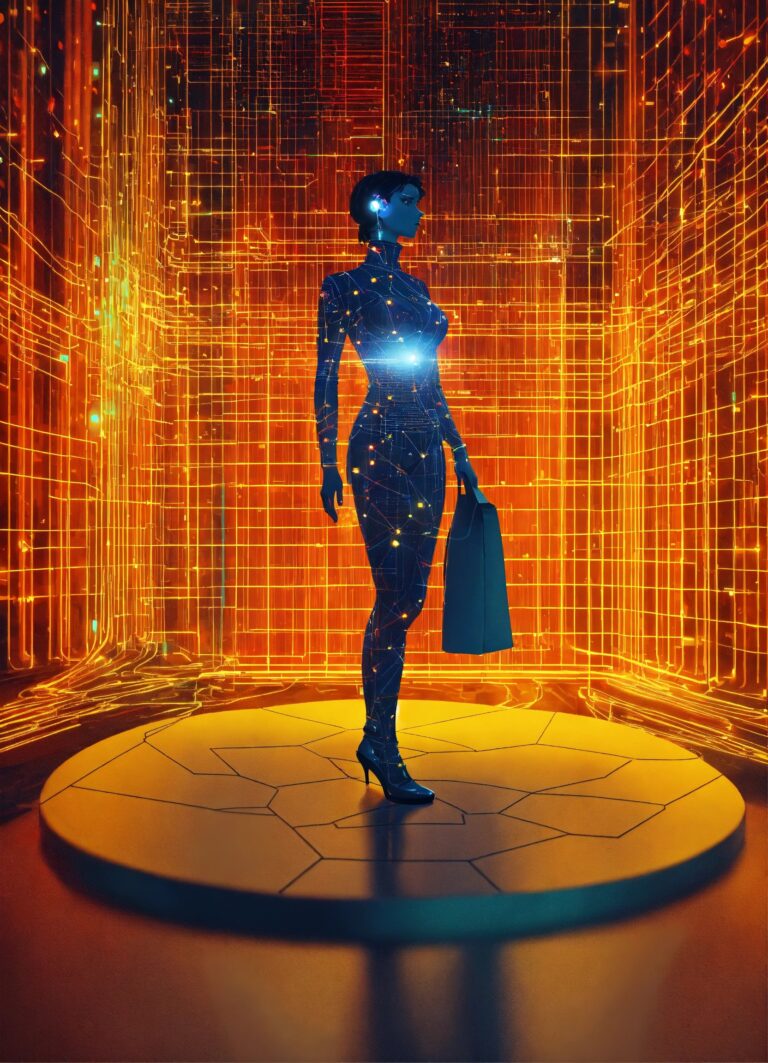You may be surprised to discover how artificial intelligence is reshaping the realms of art, music, and literature in innovative ways. This dynamic intersection is pushing the boundaries of what creativity can mean by enabling collaboration between humans and machines. In this post, you’ll explore the transformative capabilities of AI in creative processes, how it serves as a tool for artists and writers, and the implications for the future of creative expression.
The Role of AI in Art
For artists and art enthusiasts alike, the incorporation of artificial intelligence into the creative process offers a groundbreaking frontier in the world of visual arts. AI technologies are reshaping traditional methods of artistic expression, resulting in unique art forms that challenge our understanding of creativity. You may find yourself captivated by the possibilities that AI presents, as these tools not only augment human creativity but also coexist alongside it.
Generative Art and Algorithms
An vital aspect of AI in art is generative art, where algorithms create visual compositions autonomously. These algorithms can produce abstract patterns, virtual landscapes, and even lifelike portraits by processing a myriad of existing artworks as data inputs. Each piece is a fresh interpretation, allowing for an endless assortment of unique outputs. As an observer, you can appreciate the complexities of these designs while acknowledging the role of AI as a creative collaborator.
In the generative art realm, artists often set parameters or introduce random variables to guide the AI’s output, resulting in a hybrid process where human intention meets machine learning. You might be intrigued by how this blurs the lines between creator and created, pushing the boundaries of what it means to produce art. As generative techniques evolve, they continue to redefine artistic practices and challenge the established norms surrounding art creation.
AI as a Collaborative Tool for Artists
Any artist looking to expand their creative toolbox can utilize AI as a valuable partner in their artistic endeavors. By incorporating AI into the workflow, you can streamline repetitive tasks, explore new creative directions, and ultimately elevate your artistic vision. This partnership allows you to focus on the nuanced aspects of your work while leveraging AI’s capabilities to explore vast possibilities in style and technique.
Understanding the significance of AI as a collaborative tool can enhance your artistic process, as it encourages experimentation. When you integrate AI applications into your projects, you are not merely relying on technology; instead, you are engaging in a dialogue with it. This interplay can foster innovation, leading to unexpected artistic outcomes that enrich your creative practice.
Ethical Implications of AI-Generated Art
For many, the rise of AI-created art provokes vital questions regarding original authorship, copyright issues, and the authenticity of creative expression. As you navigate this evolving landscape, it’s vital to consider how these technologies might challenge the traditional notions of individual creativity and ownership. Artists and audiences alike must grapple with the implications of AI-generated works, fostering discussions about what constitutes the essence of art.
As you investigate deeper into AI-generated art, it’s beneficial to remain aware of the potential pitfalls surrounding its use. Implications regarding the reproduction of existing styles without permission or recognition, plus the ethical usage of data that machines train upon, can stir debate. Engaging in these conversations is vital, ensuring that both the art and the artists are respected while embracing the power of AI.
AI’s Influence on Music Creation
Clearly, the intersection of artificial intelligence and music creation is a rapidly evolving domain that has redefined how you both create and consume music. Innovations in machine learning and algorithmic composition are allowing for new forms of artistic expression, altering your understanding of creativity and collaboration in the music industry.
Composition Algorithms and Their Usage
On the cutting edge of music composition, algorithms designed for generating melodies, harmonies, and even entire symphonies are becoming increasingly sophisticated. These algorithms utilize vast datasets of existing music to analyze patterns, styles, and structures, enabling them to create original compositions that resonate with various musical genres. By adjusting parameters such as tempo, key, and instrumentation, you can guide the AI to produce music that aligns with your creative vision.
The implications of this technology are profound. As a musician or producer, you can harness these AI-generated compositions as a foundation or springboard for your creative projects. This collaboration with artificial intelligence allows for an effusion of creativity, enabling you to focus on the emotional narratives and themes, while the algorithm handles the structural intricacies of musical creation. As you explore this new terrain, you may find that these tools complement your skills rather than replace them, fostering a partnership that emphasizes creativity and innovation.
AI in Music Production and Mixing
Music production has greatly benefited from AI advancements, particularly in terms of refining tracks and achieving a polished sound. With AI-driven tools, you can automate tedious processes like equalization, compression, and audio effects management. Such technologies analyze your tracks in real-time, suggesting optimizations that you might overlook, thus elevating your final product.
Music mixing is often seen as an art form in itself, requiring a trained ear and a deep understanding of sound dynamics. However, AI can assist you by learning from the world’s best mixes. By applying this knowledge, AI algorithms can mimic the mixing styles of renowned engineers or even create entirely new ranges of sounds that were previously unimaginable. As a result, you gain an opportunity to experiment with innovative techniques that may not have been within your reach prior to this technological era.
Influence in music production doesn’t simply stop at the technical aspect; it also opens new avenues for exploration and inspiration. With AI as a co-creator, you are encouraged to push boundaries, attempting unusual combinations of instruments and styles that could lead to unexpected musical breakthroughs.
The Impact of AI on Music Genres
Production of music genres is also undergoing a paradigm shift due to AI capabilities. As different styles often blend and evolve, AI algorithms can identify trends and preferences within the musical landscape. You can utilize these insights to create new, genre-defying sounds, ideally catering to your target audience while remaining on the cutting edge of musical innovation.
This transformative effect on music genres is reshaping how you perceive genre boundaries and categorize music. The fusion of various styles is made more accessible through AI, enabling you to create unique compositions that transcend traditional classifications and reach a wider audience. As you innovate with these AI tools, you may find yourself unearthing new genres and subgenres that reflect the diverse musical influences available today.
AI and Literature
Your exploration of how AI intersects with literature opens up a fascinating realm of possibilities, particularly in the ways we understand storytelling. The integration of artificial intelligence into literary creation not only expands the tools available to writers but also invites a reexamination of authorship and creativity itself.
Natural Language Processing in Storytelling
One significant advancement in this area is Natural Language Processing (NLP), which allows computers to understand and generate human language. NLP has enabled software applications to assist in the development of narratives by analyzing existing texts and suggesting plot developments, character traits, and thematic elements. By leveraging vast databases of literature, these tools can identify patterns and structures that resonate with readers while providing writers a new framework from which to craft their stories.
Moreover, the ability of NLP to analyze emotional tone and language style creates opportunities for writers to refine their voice and ensure that their narratives resonate with audiences at a deeper level. By engaging with these technologies, you can not only enhance the craft of storytelling but also explore new formats and genres that might not have been possible without AI’s analytical capabilities.
AI-Assisted Writing Tools for Authors
Any aspiring or established author will find a multitude of AI-assisted writing tools that can significantly enhance their writing process. These applications can generate ideas, suggest sentence structures, and offer instant feedback on style and grammar. Such tools allow you to streamline the sometimes tedious aspects of writing, enabling you to focus more on expressing your creative vision and bringing your characters to life.
Storytelling has been transformed by tools such as plot generators and character creation software, which can provide a creative spark when inspiration runs low. Whether you are drafting a complex novel, writing a poem, or experimenting with screenplay formats, these AI-driven resources can help you navigate the writing landscape with greater ease and confidence.
The Future of AI-Generated Prose and Poetry
Any discussion about AI in literature raises intriguing questions about the future of prose and poetry. As AI algorithms continue to evolve, the capability of machines to produce coherent and compelling narratives is likely to improve. You may find yourself reading AI-generated stories that challenge your perceptions of creativity and narrative structure, blurring the lines between human and machine-generated content.
Moreover, literature produced by AI could inspire a whole new form of artistic expression, where human writers collaborate with machines to create hybrid works. This evolution could lead to innovative storytelling methods that combine traditional narratives with new technologies, thus enriching the literary landscape you engage with today.
Literature is undeniably entering a new era, and as AI continues to evolve, its impact on prose and poetry will likely grow. You may witness an expanding array of voices and styles emerging, giving rise to an enriched tapestry of stories and experiences that might provoke thought and inspire creativity like never before.
The Broader Cultural Impact
Unlike traditional artistic processes that are often solitary endeavors, the integration of artificial intelligence into creative spheres has generated a new dialogue about creativity itself. As AI tools become more prevalent, they challenge cultural norms and expectations surrounding art, music, and literature. This shift compels you to consider not only the output of AI but also the role of human intention and emotional resonance in creative work. The cultural landscape evolves as you navigate this intersection of technology and artistic expression, prompting reflections on authorship, originality, and the very definition of creativity.
AI’s Role in Evolving Art Criticism
Criticism surrounding AI-generated art has taken on a new dimension, demanding a re-examination of traditional frameworks. As these works challenge existing aesthetics, you may find yourself reconsidering the criteria by which art is evaluated. No longer is the artist solely a human being; machines now participate in the creative dialogue, making it vital to account for the algorithms and datasets that inform their output. This evolution in art criticism encourages you to think critically about the nature of creativity, pushing the boundaries of evaluation and interpretation.
Criticism also plays an important role in shaping public understanding of AI-generated works. By engaging with these critiques, you can develop a nuanced perspective on the implications of AI in the artistic realm. The ongoing discussion among critics, artists, and technologists enriches your appreciation for AI’s contributions while inviting you to engage deeply with the philosophical questions that arise from this intersection.
Public Reception and Perception of AI-Created Works
Any conversation about AI-generated art is incomplete without addressing how the public receives and perceives these works. Often, there exists a mix of fascination and skepticism among audiences; while some may embrace the innovative possibilities, others remain wary of the implications for human creativity and artistic integrity. This ambivalence shapes your understanding of the role that AI plays in today’s creative landscape, as you may find yourself torn between admiration for technological advancements and concerns about their consequences.
Works created by AI can evoke varied reactions, from awe to trepidation, as they challenge conventional ideas of authorship and creativity. Some individuals appreciate AI’s ability to mimic human styles and innovate within established frameworks, whereas others question the authenticity and emotional depth of pieces that are not born from a human experience. This diverse reception prompts you to reflect on what constitutes meaningful art as it intersects with your considerations of perception and value.
The Future of Human-AI Creative Collaborations
Perception of the relationship between human creators and AI tools continues to evolve, laying the groundwork for future collaborations. As you witness the increasing integration of AI in creative processes, you may begin to envision a future where human intuition and machine efficiency coexist, enhancing artistic expression rather than replacing it. In this new paradigm, it becomes vital to consider how partnerships between artists and AI can redefine the creative landscape, giving rise to unique forms of collaboration that marry emotion with technology.
With this potential for collaboration, new avenues for artistic exploration also emerge. As you imagine future projects, consider how AI can augment your creative practice by providing innovative tools or generating ideas you might not have conceived independently. Embracing this synergy may lead you to discover uncharted territory in your own creative journey, enabling you to push boundaries and redefine personal artistic expression. The integration of human and AI creative efforts has the potential to cultivate a rich tapestry of innovation, allowing you to explore the artistic process in an entirely new light.
To wrap up
Summing up, the intersection of AI and creativity in the realms of art, music, and literature presents a rich tapestry of opportunities and challenges. As you navigate this evolving landscape, you’ll find that AI tools can enhance your creative processes, offering novel approaches to composition, design, and narrative. The collaboration between human ingenuity and artificial intelligence is not merely about replacing traditional methods; it’s about augmenting your creative capabilities and providing new ways to express your unique voice. Embracing these technological advances can empower you to explore uncharted territories within your artistic practice.
However, it’s imperative to remain critical and thoughtful about the implications of using AI in creative fields. As you incorporate these tools into your work, consider the questions of originality, authorship, and the ethical considerations that arise. Understanding the balance between leveraging AI as a collaborator and maintaining the integrity of your creative vision will be crucial for your success in this hybrid landscape. By engaging with both the advantages and the ethical challenges posed by AI, you position yourself as a leader in the future of creativity, capable of pushing boundaries while respecting the roots of artistic expression.
FAQ
Q: How is artificial intelligence changing the landscape of art creation?
A: Artificial intelligence is revolutionizing the way art is created by providing new tools and techniques for artists. AI algorithms can generate original artwork by learning from vast datasets of existing artworks, allowing for the creation of unique pieces that may not have been conceived by human artists. This intersection of technology and creativity has led to collaborations between artists and machines, where AI can assist in the creative process, suggest color palettes, and even experiment with styles. Moreover, AI-driven platforms enable a broader audience to engage with art, as they can produce and share their own AI-generated pieces, democratizing artistic expression.
Q: Can AI create music that resonates emotionally with listeners?
A: Yes, AI can compose music that resonates with listeners on an emotional level. By analyzing large datasets of music across various genres, AI can understand patterns, structures, and emotional cues within compositions. Tools powered by AI can generate melodies, harmonies, and rhythms designed to evoke specific feelings, often mimicking the techniques used by human composers. Some artists have embraced AI as a collaborative partner, using its suggestions to enhance their creative endeavors. However, the debate continues regarding whether AI-generated music can replicate the deep, nuanced emotions expressed by human musicians, raising questions about the nature of creativity itself.
Q: What role does AI play in literature and writing?
A: AI is increasingly being utilized in literature and writing to assist authors and poets in their creative processes. Tools like natural language processing (NLP) algorithms can analyze existing literature, enabling them to generate text, suggest plot developments, and even mimic the styles of famous authors. While some writers use AI as a source of inspiration, others are experimenting with fully AI-generated works. This raises important discussions about originality, authorship, and the definition of creativity, as some critics argue that AI lacks the lived experiences necessary to produce truly profound stories. Nevertheless, AI serves as a valuable tool for brainstorming and overcoming writer’s block, providing opportunities for innovative narratives that blend human ingenuity with machine-generated content.




